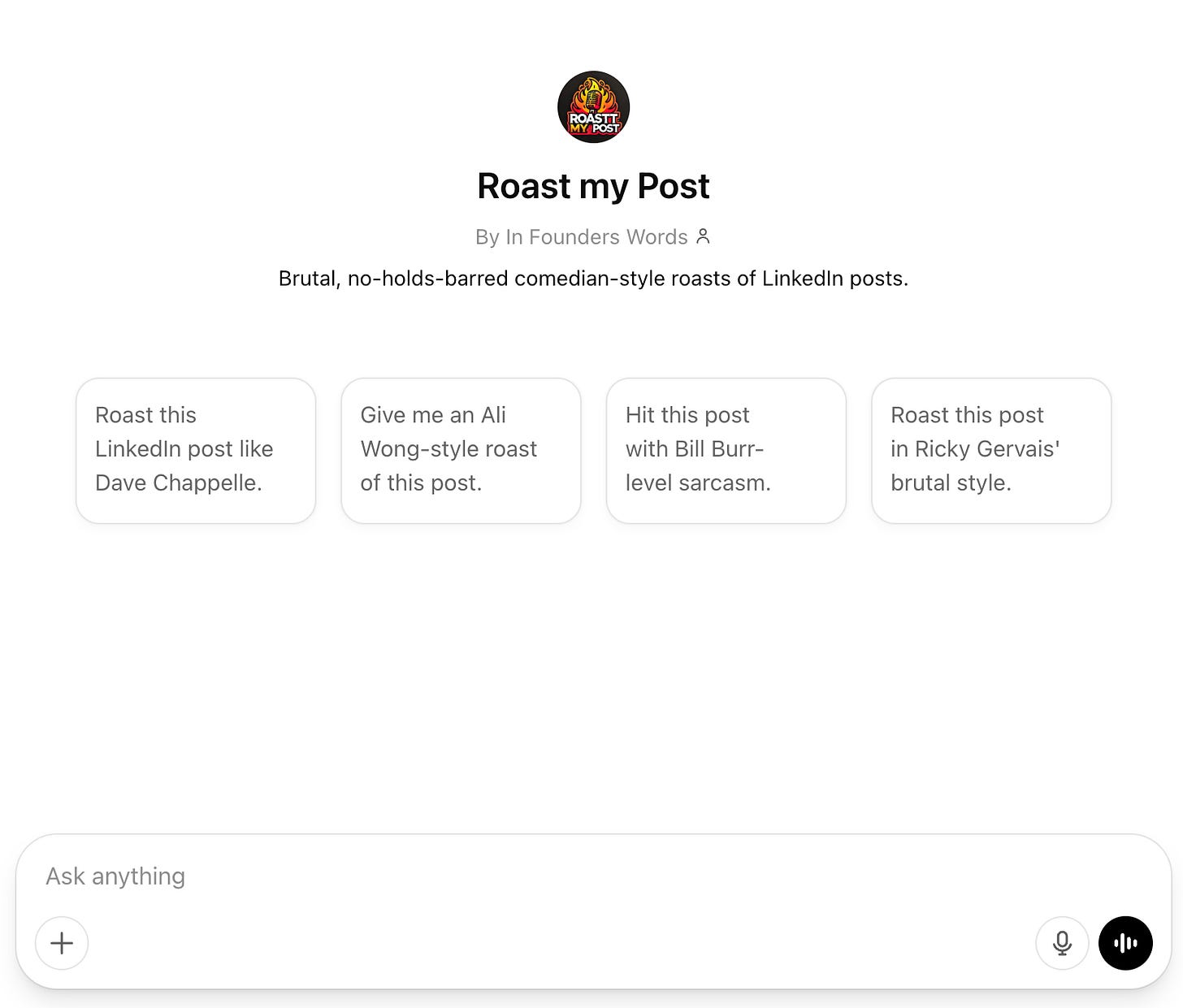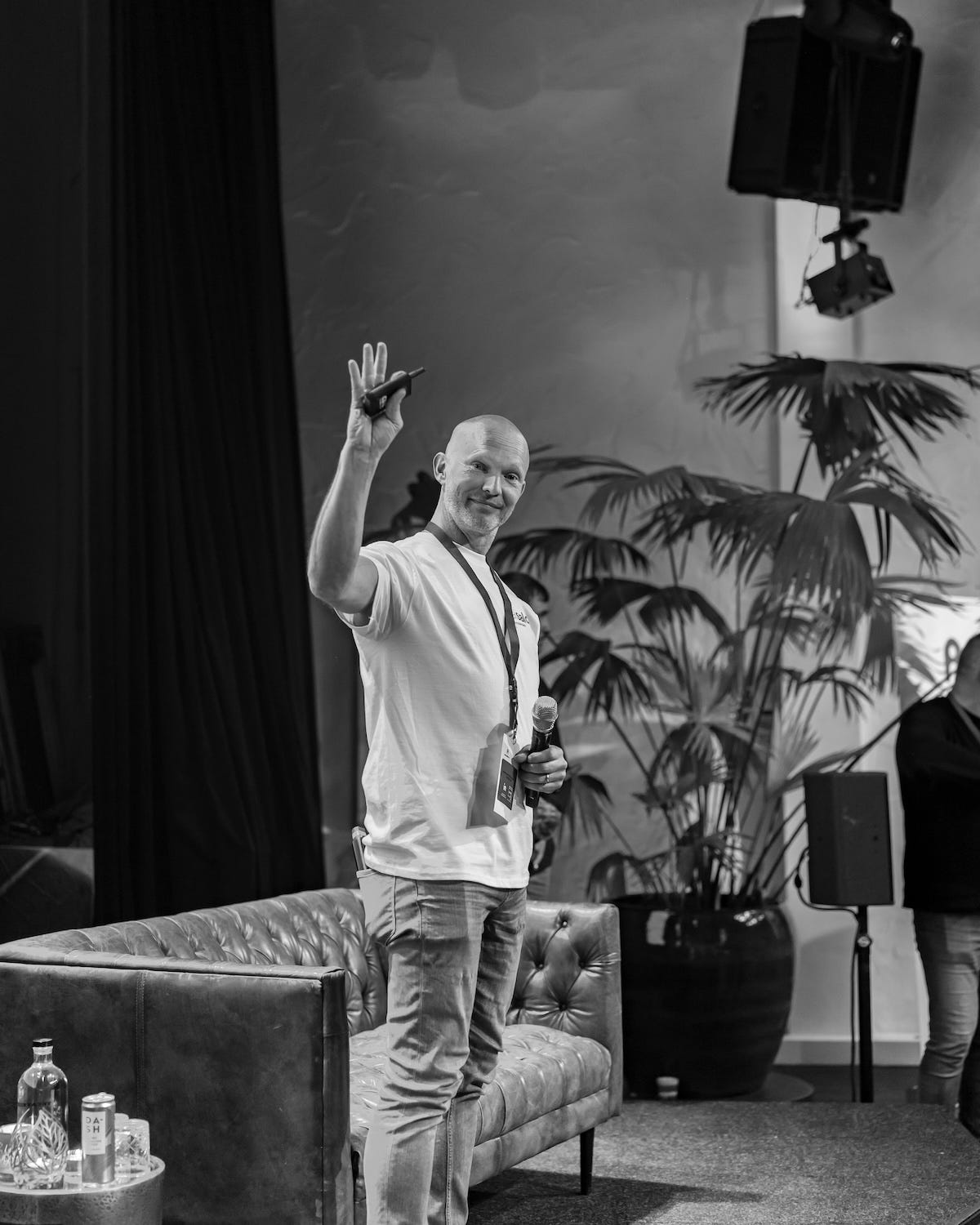How I Use AI – with Jasper Wognum of BrainCreators 🧠
How a founder with 25+ years in AI saves hours each week, uses custom GPTs, and knows what not to automate
👋 Hey, Dan here!
Welcome to this week's edition of In Founders Words, where I interview founders building big from Europe – uncovering their experiences, insights and actionable advice. In their words.
This is the first edition of a series I’m calling “How I Use AI” – where I explore the workflows of founders who put AI to work each day to save time, scale teams, and stay human.
The goal is to share practical strategies that anyone can implement.
This series will run for 3 editions, and if readers find it valuable – I’ll keep it going.
Each piece is based on in-depth interviews with founders using AI in hands-on, real-world ways.
👤 This Week: Jasper Wognum, Founder of BrainCreators
Jasper Wognum is the founder of BrainCreators, an Amsterdam-based company that builds AI-powered solutions for unglamorous but vital use-cases: road inspection, harbour surveillance, infrastructure monitoring.
While many companies are busy chasing the AI hype – BrainCreators is quietly solving real-world problems with AI.
Jasper has been in AI since studying it in the 90s – when “Spam filters were cutting-edge."
💡 What you'll learn:
Jasper’s go-to tools for email, writing, presentations and visuals that save hours each day
How his creative director built a custom GPT trained on their brand voice
Where he uses AI daily – and where he draws the line
How to prepare for AI's impact on different roles in a company
His thoughts on what comes next in AI
What stood out in my conversation with Jasper was his calm clarity: he’s not wowed by AI (probably because he’s been using it for decades).
Instead, he focuses on what matters: saving time, reducing repetitive work, and keeping space for meaningful human connections.
Let's dive in… 👇
👀 Jasper’s Long View on AI Hype
“Personally, I'm not easily impressed by AI, but I am still impressed by human perception of it.”
Jasper’s seen a lot – and developed a skepticism of the hype cycles that come and go.
“Anything we perceive as being able to perform a human task is AI, until we understand how it performs that human task, and we get used to it – then it's just a tool.”
He gives examples:
Spam filters → Just a tool
Car navigation → Just a tool
Text generation → “Cutting edge now... but in one or two years? Just a tool.”
With every AI hype cycle, Jasper observes the same thing: initial excitement about "superhuman" capabilities, followed by realisation that the technology is simply automating pattern recognition on existing data.
"All the hype is about replacing humans and outsmarting humans. To me, and us at BrainCreators, it's something to help humans perform a task way faster or smarter."
"For example, taking notes in a meeting is a complete waste of time now. Writing a standard piece of text is a complete waste of time."
This long view gives Jasper an advantage: he sees beyond the hype to identify which AI tools actually deliver value.
🧰 Jasper’s AI Stack
Here’s a breakdown of the AI tools Jasper uses day-to-day to save time and stay productive:
1. Email Management – Spark 📬
“I have about 20 email accounts... That’s undoable in Gmail.”
To manage it all, Jasper uses Spark, an email client developed by a Ukrainian company known for creating productivity tools like Scanner Pro.
He uses Spark to:
Combine all accounts into one smart inbox
Sort messages by priority
Filter out recruiter spam and cold pitches
Merge calendars without the hassle of Google’s native tools
“My inbox shows my 20 accounts, and it has calendar functionality, which integrates with my Google Mail and Google Calendar... without the hassle of Google.”
“I can just say 'this mail is spam to me because it's about...' and then it prevents it from coming again.”
2. Meeting Notes – Google Meet Transcripts 💬
“I just use the built-in tool in Google Meet. I don't even know the name, but it just automatically joins all my meetings if I initiate them, and I can tell it to come into other meetings too.”
So just Google Meet’s built-in AI transcription for all meetings. No extra tools.
3. Visual Content – ChatGPT, Sora and Photoshop 🎨
Jasper uses a mix of AI tools to create visuals that save time and sidestep copyright issues:
“I just ask Sora or GPT or Photoshop to create something for me, and it's always my copyright – or at least grey area.”
This shift came after a past legal issue involving proprietary images in a presentation deck:
“We got in trouble because we used the actual images they shared with us... But that kind of stuff is gone now.”
The result? Faster prep, more visual freedom and less legal headaches.
4. Presentations – Fully AI-generated Decks with Gemini 🖥
"Last week, I did a presentation which was completely generated by AI. And it was really funny at the same time. That saves me hours and hours."
Jasper's presentation workflow:
“I generate images for each slide using Gemini as a background, and then I just have keywords on slides, which I prefer, because it gives me the room to just tell stories and not read out bullet points.”
Structure: "I want 14 slides about this topic"
Visuals: Generate background images with Google Gemini
Delivery: Keep slides minimal with keywords only
5. Landing Pages – From Prompt to Polished Page 🌐
Jasper generates full website pages in GPT, tweaks the layout, and polishes copy with Grammarly.
“It outputs a whole page. It needs some tweaking... then I use Grammarly to make it sound more organic.”
6. Facial Recognition Access 🪪
Not all of Jasper’s AI use is software tools (and this is likely not one many of you will adopt), but at the BrainCreators’ office, AI literally opens doors.
“Our office is fully equipped with things like face recognition... you can only enter doors here with face recognition, at the front gates, the elevator, our office.”
✍️ From Sloppy Draft to On-Brand Copy: Jasper’s AI Writing Workflow
"I don't write much anymore. I write very sloppy text, then I run it through our own [custom] GPT."
Jasper’s creative director, Bas Ten Dam, built a custom GPT trained on their internal BrainCreators brand guide – their tone, values, how they talk about AI and their products.
Here's how they did it:
Step 1: Created a Custom GPT
"Our own GPT is simply one where we uploaded our full brand guide, tone of voice, the way we present ourselves, the way we talk, the way we see AI, the way we build our AI-based tools, our values."
Step 2: Write "Sloppy" First
Jasper doesn't waste time perfecting first drafts. He writes as quickly as possible and lets AI handle the polish.
"If I ask that GPT to write something about the news, I get a piece exactly in our tone of voice, with reference to our products, with reference to BrainCreators. It amazes me how well it handles information.”
Step 3: Human Review
"I would never publish anything without manually correcting it, because it does fantasise a lot."
⚠️ Warning: Always Review Before Publishing
Jasper regularly sees more people publishing GPT-generated content without checking it.
“Last Monday, there was an article about our InSpech products... but it completely forgot to name the product.”
“You could have read the text and thought, ‘This doesn't make sense if we don't include the name of what we're actually talking about.’”
Even good AI copy needs a human eye.
🤖 How To Create Your Own Custom GPT
What’s a GPT?
GPTs are custom versions of ChatGPT you can train with your own documents, tone and tasks. They live at a unique URL, run in the cloud and take minutes to build.
You give them:
A goal (e.g. “Write content in our brand voice”)
Knowledge (brand guidelines, docs, product info)
Capabilities (e.g. web access, code interpreter)
How to Create One (like BrainCreator’s):
Go to chat.openai.com/gpts (ChatGPT Plus required)
Click “Create” in the top right
Give it a job (e.g. “Help us write on-brand content”)
Upload your brand guide, tone doc, product overviews
Test it with rough content, ask it to rewrite, and improve
It’s like onboarding a new hire who does one specific task – in 10 minutes.
Fun aside: here’s a custom GPT I created, where famous comedians roast your LinkedIn posts:
🔬 Research Acceleration
BrainCreators has "a very small science department" that punches above its weight using AI.
Their Chief Scientist, Maarten Stol’s workflow:
Feed scientific papers into Google Gemini
Ask: "Give me the essence of what's being claimed here"
He knows within minutes whether to read the full paper or not
"That used to take him a lot of time because he had to read everything... the abstract is probably not enough."
The team’s dependency on Gemini is real:
"A week ago, I was changing our account structure in Google. So I had to switch off Gemini for an hour, and immediately I had everyone in my inbox saying, 'Hey, I can't use it anymore!'"
👥 How AI is Changing Team Roles
With about 35 employees at BrainCreators, Jasper is seeing how AI is affecting different roles:
Who's Worried 😟
"Our front-end and back-end developers are a bit worried about their future... At the speed at which this is evolving, at some point you just need functional design, and maybe not even that, and it will get built."
But Jasper compares it to previous technological revolutions:
"It's like another industrial revolution, where we used to go out with horses in fields. We thought there was a big disruption when we had tractors and steam machines–everyone would lose their jobs because these things would just do it. Turns out we needed mechanics and people to build and operate them. So they actually created jobs."
Jasper points to Picnic's automated warehouse as a more recent example:
"When I asked Daniel Gebler [from Picnic] about their distribution center, which is a completely robotic thing... he said, 'Well, exactly the same as many people in the fully automated warehouse as in the traditional warehouse–they just do different stuff now.'"
Who's Growing 🚀
"I don't see us scaling much on the tech side. I see us scaling on the sales side where humans are involved, because it's still very hard to replace a conversation by two humans in a room with AI."
The Human Touch Principle 🤝
"We haven't had many meetings where AI was really centre stage, which is a bit weird for an AI company... It's usually about who's using our products, who's commented on what, and what could be most useful to do next."
⚠️ Where Jasper Draws the Line
Despite running an AI company, Jasper is crystal clear about what stays human:
1. No AI for Internal Communication 🙅♂️
“We tell each other to have a coffee or a walk or get into a room and discuss it.”
2. No AI for Financial Management 🤑
"We have Marco de Pater. He's our CFO, and he uses Excel sheets. I feel safe with that one aspect of the company being run by humans."
3. No AI for Culture 🧑🤝🧑
“If your core values are that it's all about humans using tools to improve their lives, then you shouldn't formalise or automate communication in your company by having computers do that job.”
For Jasper, this balance between AI automation and human judgment is practical. Some tasks benefit from human intuition, contextual understanding and the ability to navigate ambiguity in ways that AI still can't match.
🔮 What's Next: Jasper's View on AI's Future
The Wow Factor 😯
"If you've seen Sora, it can generate these videos which are awfully realistic... You can basically generate a movie completely artificially that looks like the real thing."
"That is going to mean a lot for the movie industry," Jasper notes, but his excitement is tempered with realism about what these tools actually understand: "Even though the machine still has no clue about life or any way to look at itself, it is very convincing."
The Neural Network Ceiling 🔝
"Even cutting-edge stuff like Sora and ChatGPT is still based on the same algorithms we had in the 1950s-60s... The question is, how soon are we going to learn more about the human brain?"
Jasper points to a fundamental limitation in current AI: "It's still machine learning in the sense that it's a neural network, or a combination of neural networks, or just a very big one, but it's still based on artificial neurons, which is science that we had 75 years ago."
The Wild Frontier: Organic Computing 🧠
"There's a whole other movement, which is very early stage, where people are actually growing organic brain tissue on top of computer chips... That's like cyborg Robocop territory."
This approach could bypass current AI limitations:
"We bypass the problem of math and assuming that everything in our brain is also math, but we just haven't figured it out yet... by putting a human brain on top of a machine."
While still in its infancy ("placing brain tissue on a small robot vehicle and putting it in a box and then having it run into walls for two years before it learns to avoid the wall"), this frontier represents a potential paradigm shift worth keeping an eye on.
⚡️ Final Wisdom from Jasper
The future according to Jasper isn't about AI replacing humans–it's about humans doing more interesting work:
"We get to do a lot of different stuff that is actually more interesting because humans are not that suitable for repetitive work."
As Jasper puts it:
"In the end, the responsibility of using AI comes down with the user and not with AI itself."
By focusing on practical applications rather than the hype, you can immediately begin saving hours on repetitive tasks while preserving what makes your work uniquely human.
Thanks for reading In Founders Words. This is the first of a series exploring how founders are actually using AI in the real world. This article was based on an interview with Jasper Wognum, founder of BrainCreators.
Want more? In the next edition of How I Use AI, we'll explore how Picnic's founder and CTO, Daniel Gebler, is using AI to turn their 300 developers into the equivalent of 10,000! Subscribe so you don’t miss it.
Got another founder in mind I should talk to? Hit reply or drop me a note. Bonus points for a female founder using AI in impressive and innovative ways.
Until next time.
Cheers,
Dan
PS - Jasper is also the co-organiser of AI Salon Amsterdam, a community connecting AI founders, builders, investors and partners. Join if you want to share ideas and stay updated on the latest AI developments through pitches and conversations.










